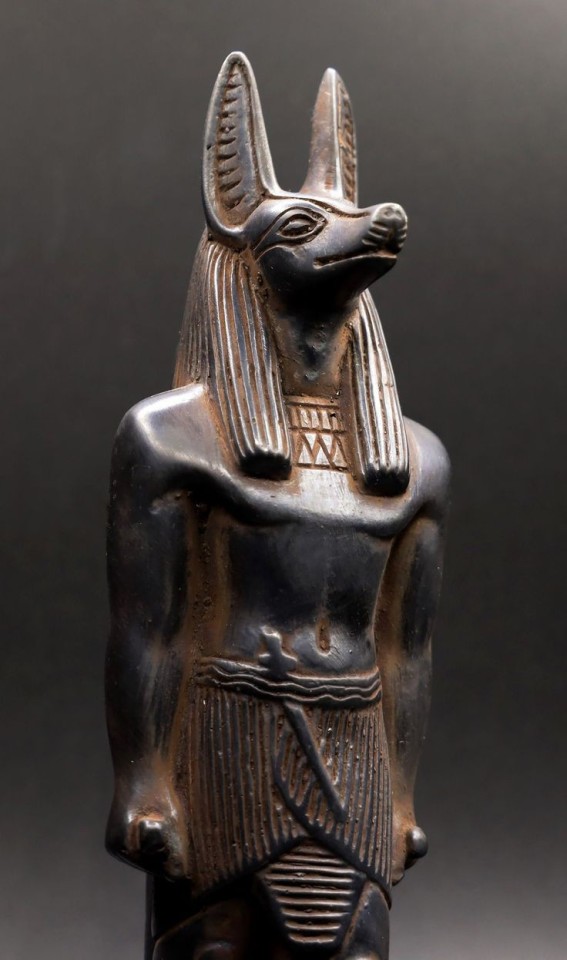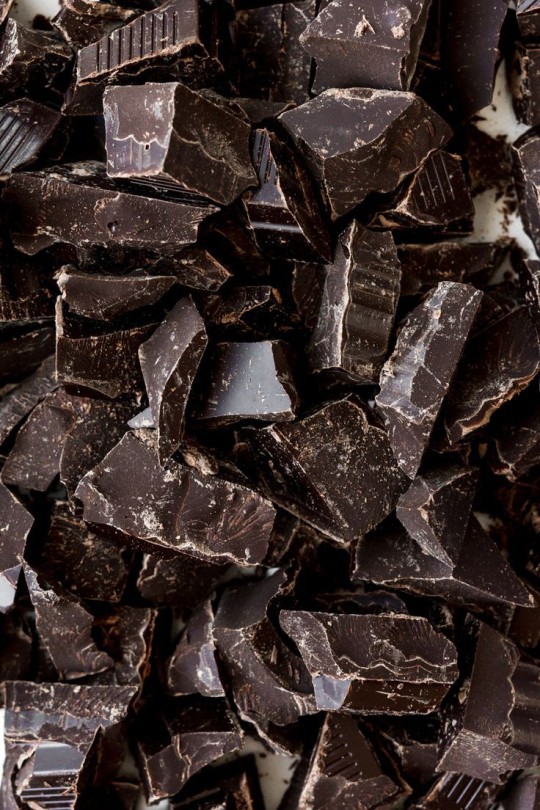#kemetic magic
Explore tagged Tumblr posts
Text
Heka Against a Wayward Heart
Broken hearted? Feel like you cannot control your emotions or like your heart has turned away from you? I created this heka to soothe and strengthen the connection between the khet, or physical body, and the ib, or heart.
As with all heka, I recommend cleansing yourself beforehand. Speak the words aloud, and allow your magic and strength to be behind each word.

Words to be said by the magician:
"Let my heart not stand against me, Let it not be repulsed from it's desires. Let my heart stand with you, O' Gods! Let my heart be strengthened in me, O' Gods!
Let my heart not speak against me, Let it no longer cause me pain. Let my heart stand with you, O' Gods! Let my heart stand with me, O' Gods!
The magician may also be inclined to give offerings to their ib, to please it and give it strength. In this, they may approach it as a separate entity, to be pacified. I recommend offering water before presenting additional offerings, to cool the ib first. Food offerings may be 'reverted' and eaten, and any others may be set aside in an altar or shrine space.
Words to be said by the magician during offerings:
"O my heart, O' my ib, I bring you water, May it cool you, may it purify you! May you stand with me once more!
O' my heart, O' my ib, I bring you [name of offerings], May it please you, may it bring you joy! May you stand with me once more!"
51 notes
·
View notes
Text
before you ask "are the gods mad at me?" THINK:
have you...
1. killed or maimed someone
2. killed or maimed an animal for purposes other than consuming/processing it
3. knowingly and purposefully hurled vile obscenities or insults at any god or gods
4. made it a life goal to be a terrible person
5. been a terf
IF YOU SAID NO TO ALL OF THESE QUESTIONS then girl you're fine go have a dr. pepper
#pagan#paganism#polytheist#polytheism#witchblr#witchcraft#witch#magic#hellenic paganism#hellenic polytheist#hellenism#hellenic polytheism#helpol#pagan witch#pagan community#paganblr#hellenic pagan#greek polytheism#greek gods#norse gods#egyptian gods#gods#deities#deity#hellenic deities#deity work#deity worship#kemetic#heathenry#norse heathen
888 notes
·
View notes
Text

The Dendera zodiac - Egypt
#alchemy#magic#ancient#archaeology#energy#ascension#astrology#astronomy#light#consciousness#ancient egypt#science#pyramids#dendera#kemet#ancient kemet#godhood#technology
156 notes
·
View notes
Text
Simple offerings for Anubis ⚖️🪶

-Gold or black candles
-Jackal imagery
-Dog related items
-Scale imagery
-Feathers
Crystals:
-Black obsidian
-Labradorite
-Amethyst
-Pyrite
-Amber
Food offerings:
-Dark chocolate
-Pineapple
-Honey
-A bowl or glass of water
-Wine
-Beer
-Rum

#pagan witch#paganblr#paganism#deity#deity work#magic#witchcraft#anubis deity#god anubis#egyptian gods#egyptian mythology#ancient egypt#ancient egyptian#egyptian paganism#kemetic paganism#kemeticism#kemetic#kemetism#kemetic polytheism#deity worship#deities#offerings#offering#polytheism#pagan#pagan blog#pagan community#pagans of tumblr#witchblr#witch blog
256 notes
·
View notes
Text

Another depiction of the Mother Universe. Dua Nut!
#paganism#kemeticism#polytheism#nut#goddess nut#kemetic paganism#black spirituality#nuit#nwt#netjeru#dua nut#art#my art#artist of tumblr#black artist#black women#black girl magic
41 notes
·
View notes
Text
Room Spray for Imbolic!
Ingredients:
-fresh basil (prosperity)
-fresh lemon peel (cleansing)
-Chamomile tea (restoration, energy)
-dried lavender (comfort)
-water
Instructions:
1. Combine all dry ingredients in a pot containing 2 cups water, stir clockwise with your dominant hand to invite in your intentions.
2. Bring to medium heat and allow to simmer (not boil) for 3 minutes. Remove from heat.
3. Allow mixture to cool fully.
4. Strain into a spray bottle.
5. Test spray in a small area, dilute if needed.
How to use:
Spray in whatever room you will be spending time in this Imbolic to invite the positive energy of the season into your home.
This and other pieces from my personal craft available on my blog.
28 notes
·
View notes
Text
Calling all pagans and practitioners!
I have been wanting to do more devotional poetry so if you’d like a poem or prayer about your specific’s deity or practice, send me your request in asks or the comments of this post!
All practices and paths are welcome to request <3
REQUESTS ARE OPEN

#devotional blog#brigid devotee#brigid#goddess brigid#digital altar#brigid goddess#gaelpol#brighid#irish pagan#helpol#hellenic polytheism#norse paganism#heathenry#deity work#automatic poetry#death work#folk magic#pagan prayer#requests#paganblr#witchblr#conpantheon#pop culture pagan#pop culture paganism#irish paganism#folk Catholic#kemetism#roman paganism#gaulish paganism#Etruscan paganism
105 notes
·
View notes
Text
Still dealing with these people in my house... Hopefully the witches I just paid on Etsy can do something because apparently me having trauma and doing the magick on my own isn't the answer.. (I say, losing some faith in myself since nothing I've done has removed these people from my house though I don't want to go harder while they're here just to get rid of them because it might hit us all.)
😐 I'm honestly fed up and will probably spend the day being as such because I'm actually on the verge of losing my mind.
If they don't do it idk what will. I might have to just take a risk and put us all on the streets and make us start over from scratch if nothing changes in January and for the long term...
#witch community#witchblr#paganblr#witchcraft#pagan#witchcore#dark witch#pagan witch#death witch#death witchcraft#baneful witch#baneful magic#witches#energy work#kemetic paganism#hellenic pagan#paganism#elfum#elf#elves#kemetic#kemetism#magick#witchcraft tips#spiritualgrowth#spiritual journey#spirituality#spiritual awakening#banishing#hexing
26 notes
·
View notes
Text
Sometimes things don’t work out. Deities won’t get angry if your not able to worship/work with them.
#paganism#polytheism#kemetic#kemeticism#pagan witch#hellenic paganism#hellenic pagan#pagan#paganblr#witch craft#witchcraft#witch#witches#witchblr#magick#death magick#herbal magick#kitchen magic#pagan community#pagans of tumblr#norse heathen#heathenry
245 notes
·
View notes
Text
Deity Identification Help
Recently, I’ve been feeling that a deity has been reaching out to me, but I wasn’t quite sure who. I decided to do a deity spread I found and here were the results:

Here is the spread I used:

I think I got wonderful and distinct results, but I need some help identifying which goddess this may be. Are there any pagans that can help me? Any other advice or input on my results would be immensely appreciated! 🫶
#pagan#paganblr#pagans of tumblr#paganism#pagan witch#witch#deity work#deity worship#deity identification#witch blog#witchblr#witchcraft#witches#witch community#divination#tarotblr#tarot#tarot reading#hellenism#nordic paganism#celtic paganism#brujas of tumblr#kemetism#magic#pagan community#eclectic pagan#aztec gods
40 notes
·
View notes
Text
My Apollo and Sutekh altars <3




#altar#apollo#sutekh#set#helpol#hellenic polytheism#hellenic pagan#hellenism#kemetic#kemetism#magic#witchblr#witch
44 notes
·
View notes
Text
Heqat Rebirth Heka
Heqat is often viewed as a frog headed goddess who presides over birth (as well as rebirth). She sits with Khnum at His potters wheel, and breathes life into His creation. She is also present at birth, and acts as a midwife to the Netjeru.
In terms of rebirth and recreation, She is often tied to the resurrection of Wesir and the dead. She is there for us in death, just as She is at birth.
This heka focuses on the rebirth and recreation aspect, to have Her assistance in facilitating change and growth within our lives. When approaching Her to do this heka, I would recommend having a clear idea of what rebirth and change means to you, and how you wish for it to come in your life (whether it is in terms of personal, professional, or other matters).
As with all heka, I recommend cleansing yourself beforehand. Speak the words aloud, and allow your magic and strength to be behind each word.

The magician approaches their shrine with offerings and a glass of cool water. They call upon Heqat, and present the offerings while speaking aloud.
Words to be said:
"O' Heqat, Mistress of Creation, You who were present at my birth, I come to Thee as Thy beloved child!
O' Heqat, Great Mother, You who are constant in my life, I come to Thee for Thy assistance!
I have brought [name of offerings], May they please You, May they nourish You, May You hear my prayers now!"
The magician then focuses on rebirth and recreation. They pray to Heqat, touching on what they need assistance with, while praising and thanking Her for Her help in such matters.
They then take the glass of water, and hold it above or within the shrine.
Words to be said:
"From the waters of the Nun, creation was born. From the waters of the Nun, all is created. I too was created and born within the Nun, at the hand of Heqat.
She has brought me forth, born anew! She has brought me forth, in strength and prosperity! She leads me now, to my future! She leads me now, to my desires!"
The magician may now 'revert', or drink the water. The offerings may sit upon the shrine if nonperishable, or 'reverted' as well if a perishable food item.
#coyote resources#heka#kemetic#kemetic magic#kemetic witchcraft#spell#spells#spellcraft#witchcraft#heqat#heqet#heqat deity
20 notes
·
View notes
Text
altars for kemetic/egyptian gods
hi yall, another purely based in UPG, new agey post! historically, deity offerings for the ancient egyptians often took the form of art/sculpture/hymns, incense (like frankincense or myrrh), or offerings of food (especially meat and bread) and drink (wine/ale, mostly). dialogue with the gods was often facilitated through the pharaohs or funerary rites, but your average person had access to daily magic and regular temples as well.

RA
Colors: yellow, orange, red for the sun
Offerings: eye of ra, dates, figs, grapes, apricots, sunflowers, morning glories, chocolate, pastries, orange juice, honey
Crystals: sunstone, yellow/red jasper, citrine, carnelian, honey calcite, angelite, kyanite
Animals: falcon
SHU
Colors: white, blue for the air/sky
Offerings: feathers (especially ostrich), sandalwood, gardenia, anise, paper fans, cornflower
Crystals: white/clear quartz, angelite, selenite, blue calcite, fluorite, blue lace agate
Animals: lion, ostrich
TEFNUT
Colors: white, blue for water
Offerings: sea salt, reeds, shells, water, coral, water (especially dew), lotus root/flower
Crystals: blue calcite, sodalite, lapis lazuli, amethyst, larimar, ocean/blue lace agate, aquamarine
Animals: lioness
NUT
Colors: blue, black for night. white for stars
Offerings: amber, sandalwood, sycamore, moonflowers, morning glories, milk
Crystals: lapis lazuli, star jasper, azurite, obsidian, smokey quartz, black tourmaline, labradorite, sodalite, moonstone (especially black)
Animals: boar, cow, sow
GEB
Colors: green, brown for earth. black for the underworld
Offerings: grain, beans, yarrow, cinnamon, coffee, egg shells, foliage, dirt, rocks, snake shed, milk
Crystals: jasper (various types), aventurine, moss/tree agate, unakite, obsidian, jade, malachite
Animals: snake, goose, rabbit, bull
OSIRIS
Colors: green for renewal, black for death, white for rebirth
Offerings: bandages, dark chocolate, dried fruit (especially oranges or dates), dark chocolate, coffee, cedar, vetiver, bones
Crystals: lapis lazuli, moss agate, jasper (various types), malachite, obsidian, smokey quartz, pyrite, jade, howlite, star jasper (for his astral form)
Animals: heron, ram, cow
ISIS
Colors: white, grey for the moon. blue, black for the night. green for life and resurrection.
Offerings: the tyet symbol, cow horn, milk, sycamore, feathers, dried fruit (such as raisins or dates), pomegranates, nuts, pastries
Crystals: star jasper, moonstone, rose quartz, amethyst, fluorite, bloodstone, red jasper, carnelian, labradorite, aventurine
Animals: birds (especially a kite hawk or vulture), cow, cat, scorpion, sow
HORUS
Colors: blue, purple for insight and intuition. white and red for pharoahship.
Offerings: eye of horus, weaponry/iron, lotus flower/root, feathers (especially hawk or falcon), yarrow, chocolate
Crystals: malachite, aventurine, pyrite, amethyst, lapis lazuli, jasper (various), howlite, sunstone, aquamarine, labradorite, hematite
Animals: falcon
NEPHTHYS
Colors: black for darkness and funerary rites
Offerings: beer, linen, feathers (especially of a crow or vulture), bones, coffee, nuts, milk
Crystals: obsidian, smokey quartz, black moonstone (because of association with Isis), black tourmaline, red jasper, bloodstone
Animals: vulture, crow
SET
Colors: red, black for chaos and storms
Offerings: lettuce, sand, alcohol, dragon's blood, patchouli, yarrow, vetiver, charcoal, dark chocolate, black pepper
Crystals: red jasper, black tourmaline, howlite, obsidian, labradorite, sodalite, bloodstone, malachite, pyrite
Animals: the set animal (which resembles a canine, giraffe, and aardvark), donkey
THOTH
Colors: grey, blue for intuition/intelligence. white for the moon
Offerings: quill, ink, pieces of writing/books, feathers, rosemary, citrus, sage, moon water, lavender, nuts
Crystals: amethyst, lapis lazuli, malachite, moonstone, selenite, howlite, angelite, sodalite, fluorite
Animals: ibis, baboon
ANUBIS
Colors: black, grey for funerary rites/death
Offerings: bones, ash, charcoal, red/black peppercorns, marigold (associated with the dead), linen, yarrow
Crystals: hematite, obsidian, black tourmaline, howlite, jasper (various, but especially red), smokey/rutilated quartz, bloodstone
Animals: canines, especially a jackal
BASTET
Colors: white, red for pharaohship
Offerings: ointments/perfumes of most types, cedar, anything cat related, rosemary, black salt
Crystals: tiger's eye, cat's eye quartz, bloodstone, red jasper, black tourmaline, howlite, milky/smokey quartz, pyrite, carnelian
Animals: lioness, cat
SEKHMET
Colors: red for war. grey for justice
Offerings: sand (especially red), scales of justice, iron, cypress, red pepper, black salt
Crystals: bloodstone, red jasper, carnelian, garnet, ruby kyanite, jade, smokey/clear, hematite
Animals: lioness
HATHOR
Colors: pink, red for love/sexuality
Offerings: dancing, dried fruits (especially figs/dates), pomegranates, sycamore, milk, honey, pastries
Crystals: rose quartz, amethyst, citrine, carnelian, fluorite, jade, aquamarine, garnet/ruby
Animals: cow, lioness, cobra
KHONSU
Colors: white, grey for the moon. blue, black for the night.
Offerings: lavender, sage, mugwort, dried fruit, moon shaped items, moon flower, ash
Crystals: moonstone, selenite, sodalite, obsidian, black tourmaline, smokey/milky quartz, jasper (various), blue lace agate, lapis lazuli
Animals: falcon
#pagan#paganism#polytheist#witchblr#witchcraft#polytheism#witch#magic#magick#divination#kemetic#kemetism#egyptian gods#ancient egypt#egyptian mythology#deities#deity work#deity worship#deity#altars#osiris#isis goddess#horus#anubis#bastet#bast
465 notes
·
View notes
Text
Secret Magical Gift Swap 2024/2025 - Sign-Ups Open! 🔮🌿🍄

Hi everyone! ✨
After a break of 6 years, the Secret Magical Gift Swap is back!
The aim of the swap is to create friendships within the pagan/witchcraft/heathenry/other spiritual community and spread the gift of giving through a postal Secret Santa style event where you send a gift and receive one in return. It's tailored to witches, pagans, heathens, non-religious and religious people alike, Kemetics, Hellenics, polytheists of all sorts, those interested in nature paths, those that follow folk religions, astrologers and others on a path of alternative practice or magic.
In the past this was an annual event but we are now back with a plan to keep the Swaps going a few times a year, more than likely quarterly, with one for every season.
To start this new chapter off, I decided to create the first Swap now, around the very season of giving. However, with the way the financial situation is around the world right now and many post offices being closed for the end of December and start of January, this first Swap will go on from now until the end of January, with a short break in February before we jump into the second Secret Magical Gift Swap!
🍄✨ How to Join The SMGS 24/25:
Read the event rules here and here.
Fill out the Sign-Up form here.
Reblog this post to spread the word!
Join our Discord server if you have a Discord account, for which an invite will be sent to you some time after joining the Swap (this may take time as I'm currently setting up the server :'D)
If you have any questions, please send an ask or message to here or to the organizer, @fernsinthemist The deadline for joining the Swap is November 28th!
Participants will be paired up and sent out within a few days after the deadline.
Enjoy the Swap, everyone!
I am also looking for help! If you are interested in helping to organize this Swap or future Swaps, please fill out this form to apply for a moderator role!
#witchcraft#paganism#secret santa#gift exchange#secret magical gift swap#hellenic pagan#kemetic#norse paganism#slavic polytheism#celtic paganism#irish polytheism#baby witch#witch community#witchblr#pagan#witches#witchy vibes#kemeticism#kemetic fandom#hellenismos#hellenic worship#greco roman#roman polytheism#polytheism#greek polytheism#deity work#herbology#astrology#tarot#crystals
15 notes
·
View notes
Text
cat mama save me.......Bastet pls.........save me cat momma ......spare my life
#what is this magic word#what does it meannnnnn#is this just a name ypu given me#what is the meaningnnnnn#witchcraft#pagan#paganism#deity work#shitpost#kemetism#kemetic paganism#kemetic#bastet#bastet devotee
35 notes
·
View notes
Note
How do you identify spiritually? since you’re a cuban who practices the magical arts
I was born and raised on the island of Cuba and later grew up in the diaspora. As a reflection of my cultural heritage and personal identity, I primarily identify as a Bruja, My family adheres to Catholicism and holds a deep belief in Jesus and the Catholic saints, as is common among many individuals of Cuban heritage. however In addition to these practices, they also practice a variety of other spiritual traditions/practices that were part of my upbringing. However, I do not fully align myself with all aspects of my family's practices for several personal reasons.
I identify as practicing dual faith sometimes, as my work involves engaging with various spirits and deities from both my cultural background and beyond(which I mean open practices that aren’t part of my culture) For instance, I have a connection with Atabey and Itiba Kaubaba, who are ancestral spirits of nature from my lineage. Additionally, I also honor/work with Hellenic and Kemetic deities, such as Hera and Auset.
My spiritual journey may evolve over time, but I will always identify deeply as a Bruja. This designation resonates with me on multiple levels, as it not only connects me to my cultural heritage but also honors my ancestors and my birthplace, Cuba.
#bruja#brujasoftumblr#spirituality#brujeria#witchblr#witchcraft#brujas of tumblr#brujas de tumblr#taino#bruja tumblr#latina witch#latina witch of tumblr#latina witch de tumblr#brujablr#brujasdetumblr#folk witchcraft#folk witch#folkloric witch#folk magic#folkloric witchcraft#cuba#cuban#atabey#cemi#Hellenic#kemetic
8 notes
·
View notes